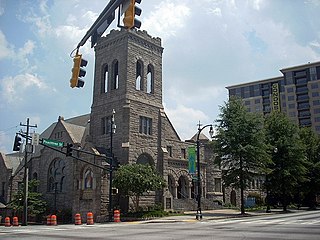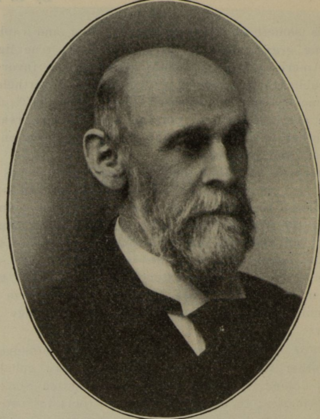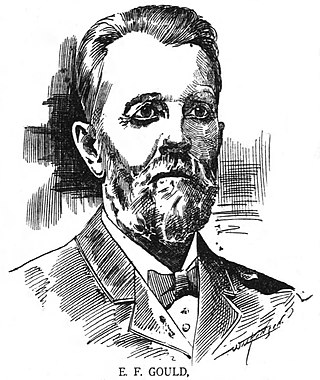
The Piedmont Hotel was a hotel in Downtown Atlanta, Georgia, United States. Construction on the building, which was designed by architect Willis F. Denny, began in 1901, and the building was opened to the public in January 1903. Considered one of the finest hotels in the city at the time, numerous famous guests stayed at the hotel while visiting Atlanta, including three presidents of the United States. Unlike other Atlanta hotels, the Piedmont sought to emulate the style of hotels in the northeastern United States and was commonly referred to by locals as "our New York City hotel". In 1929, the building went through an extensive renovation overseen by the architectural firm of Pringle & Smith. In 1965, the owners of the hotel agreed to sell the property to the Equitable Life Assurance Society of the United States, who planned to build a new office building on the site. The hotel was demolished that year and in 1968, the Equitable Building was completed.
Washington Hall was a historic hotel in antebellum Atlanta, Georgia. Built in 1846, the building was one of the earliest hotels built in the city. The hotel, along with many other structures in the city, was destroyed in 1864 during the Battle of Atlanta.

North Avenue Presbyterian Church is a historic Presbyterian church at 607 Peachtree Avenue, NE in Atlanta, Georgia. The church building was completed in 1900 and was added to the National Register of Historic Places in 1978.

Hotel Indigo Atlanta Midtown is a historic building in midtown Atlanta, Georgia. Designed by Atlanta-based architectural firm Pringle and Smith in 1925, the brick building is located on Peachtree Street, across from the Fox Theatre. It has been listed on the National Register of Historic Places since 2006, and, in 2022, is a member of Historic Hotels of America.

Alexander Campbell Bruce (1835–1927), also known as A. C. Bruce, was an American architect based in Atlanta, Georgia.

The Lutheran Church of the Redeemer is a Lutheran church in midtown Atlanta, Georgia. The congregation was founded in the city in 1903, with the current building constructed in 1952.

200 Peachtree is a mixed-use retail center in downtown Atlanta, Georgia designed by Philip T. Shutze and Starrett & van Vleck. Built in 1927 as the flagship department store for Davison's, the last department store in the building closed in 2003. The building later underwent an extensive renovation in the 2010s.

One Georgia Center is a skyscraper in SoNo, Atlanta, at the intersection of West Peachtree Street and North Avenue. Completed in 1968, the 24-story building is notable for its Georgia marble exterior.
Jasper Newton "Jack" Smith was an American businessman from Georgia. Born in Walton County, he moved to Atlanta following the Civil War where he became a successful and eccentric businessman.

Saint Bede Catholic Church in Williamsburg, Virginia is a Catholic parish in the Diocese of Richmond. The National Shrine of Our Lady of Walsingham, located adjacent to the campus of the College of William and Mary, is a part of the parish. It was the first Catholic church in Williamsburg.

Founded in the 1830s as a railroad terminus, Atlanta experienced rapid growth in its early years to become a major economic center of Georgia, with several hotels built to accommodate for this growth. Following its destruction during the Civil War, Atlanta experienced a resurgence and another hotel boom commenced in the late 1800s through the early 1900s. In the later half of the 20th century, hotel skyscrapers began to appear on the skyline, including what was at the time the tallest hotel in the United States. Later, a trend emerged of converting old office buildings into boutique hotels.

The Terminal Hotel was a hotel in Atlanta, Georgia, United States. Built by Samuel M. Inman in 1906, the hotel was located at the intersection of Spring Street and Mitchell Street in the Hotel Row district of downtown. It suffered two major fires during its existence, the latter of which completely destroying the building.

Erastus Franklin Gould was an American businessman and banker during the 1800s. Born in Oswego County, New York, he became a successful businessman in the banking industry in Minneapolis, Minnesota before moving to Atlanta, Georgia in 1886.

Christ Church is an Episcopal church at 28 Bull Street, Johnson Square, in Savannah, Georgia. Founded in 1733, it was the first church established in the Province of Georgia and one of the first parishes within the Episcopal Diocese of Georgia, earning it the nickname "the Mother Church of Georgia". The present church building was constructed in 1838 and is located in the Savannah Historic District.

St. Luke's Episcopal Church is an Episcopal church in Atlanta, Georgia. The parish was founded in 1864, with the current building on Peachtree Street constructed in 1906.
The Atlanta streetcar strike of 1916 was a labor strike involving streetcar operators for the Georgia Railway and Power Company in Atlanta, Georgia. Precipitated by previous strike action by linemen of Georgia Railway earlier that year, the strike began on September 30 and ended January 5 of the following year. The main goals of the strike included increased pay, shorter working hours, and union recognition. The strike ended with the operators receiving a wage increase, and subsequent strike action the following year lead to union recognition.
The Bleckley Plaza Plan was a proposed engineering project in Atlanta, Georgia, United States. Proposed by architect Haralson Bleckley in the early 1900s, the project would have seen numerous railroads in downtown Atlanta covered by a large public plaza that would have run from the Georgia State Capitol to Terminal Station, covering much of The Gulch. The project, while considered at numerous points in the early 1900s, never came to fruition.

Grace United Methodist Church is a Methodist church in Atlanta, Georgia, United States. Originally organized as a mission in 1871, the current church building was designed by Francis Palmer Smith and was completed in 1923.

Pershing Point Park, also known as Pershing Point Memorial Park, is a small public park in Atlanta, Georgia, United States. The park, located in midtown Atlanta, is formed by the intersection of Peachtree Street and West Peachtree Street. It was dedicated in the 1920s in honor of General of the Armies John J. Pershing and includes a memorial to Fulton County soldiers who died in World War I. The World Athletes Monument is also located in the park. A 2018 article in The Atlanta Journal-Constitution listed the park as one of three World War I memorials in the Atlanta metropolitan area.

St. Timothy's Church, Roxborough is a parish of the Episcopal Diocese of Pennsylvania in the Roxborough neighborhood of Philadelphia, Pennsylvania, United States. It is part of the Wissahickon Deanery of the Diocese of Pennsylvania. In 1962, St. Timothy's reported membership of 1,144 and weekly attendance of 849, while its 2021 reported attendance was 27 persons.




















